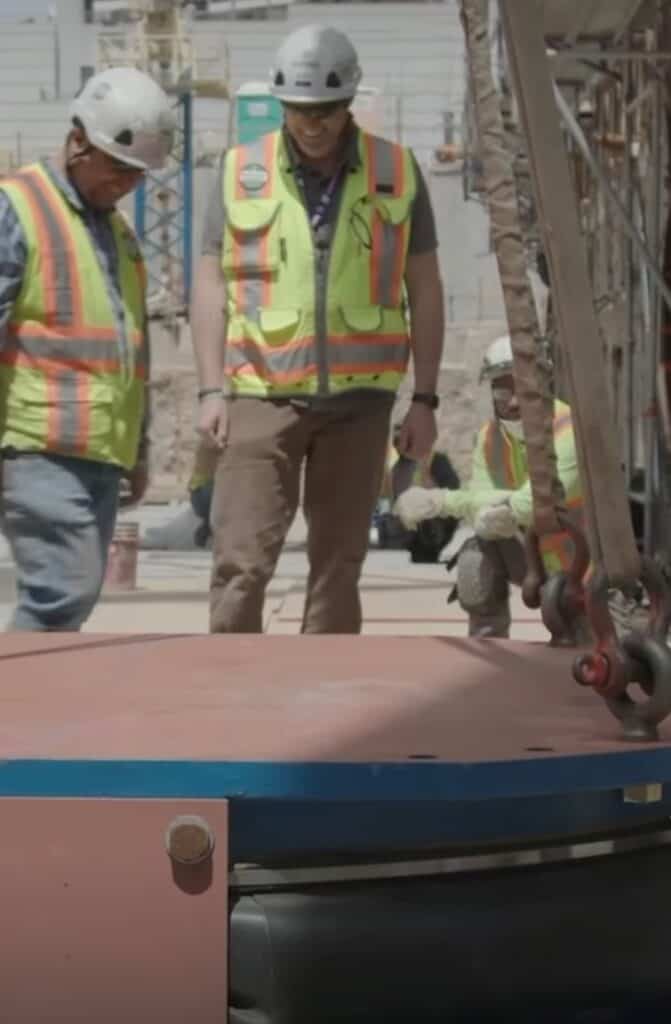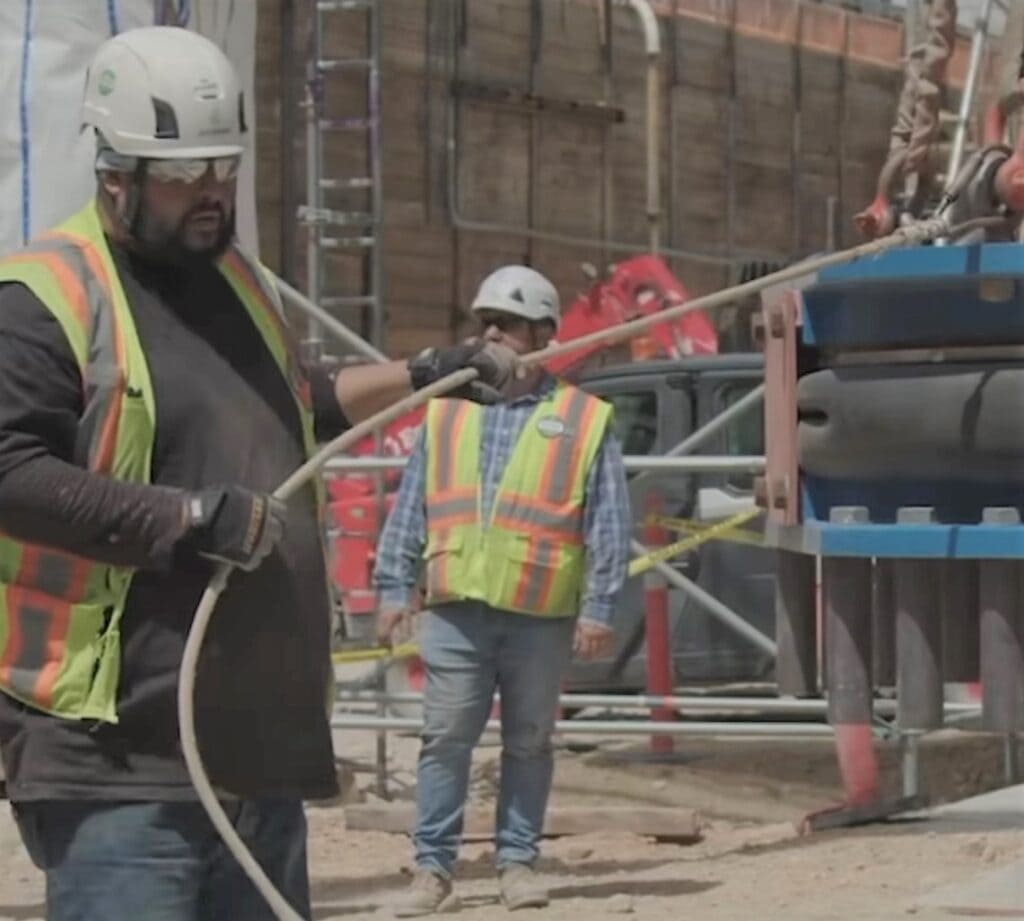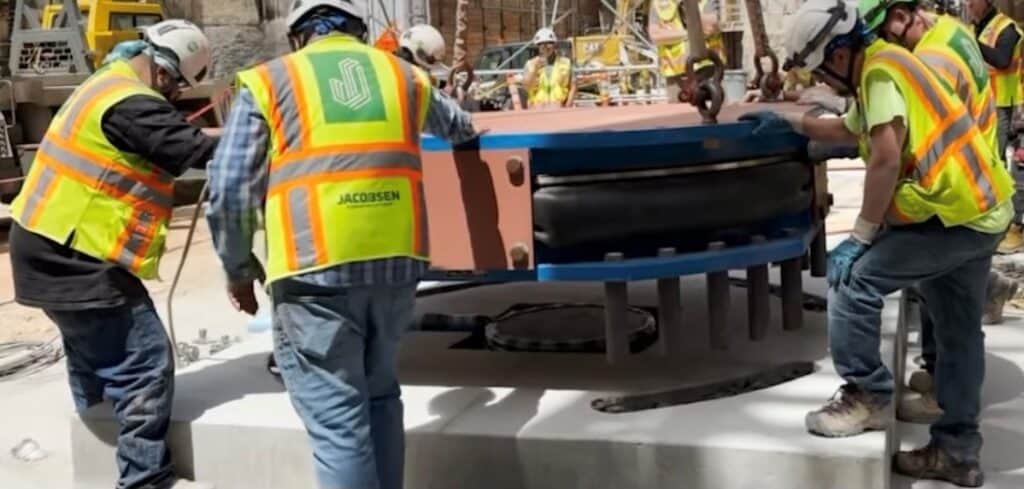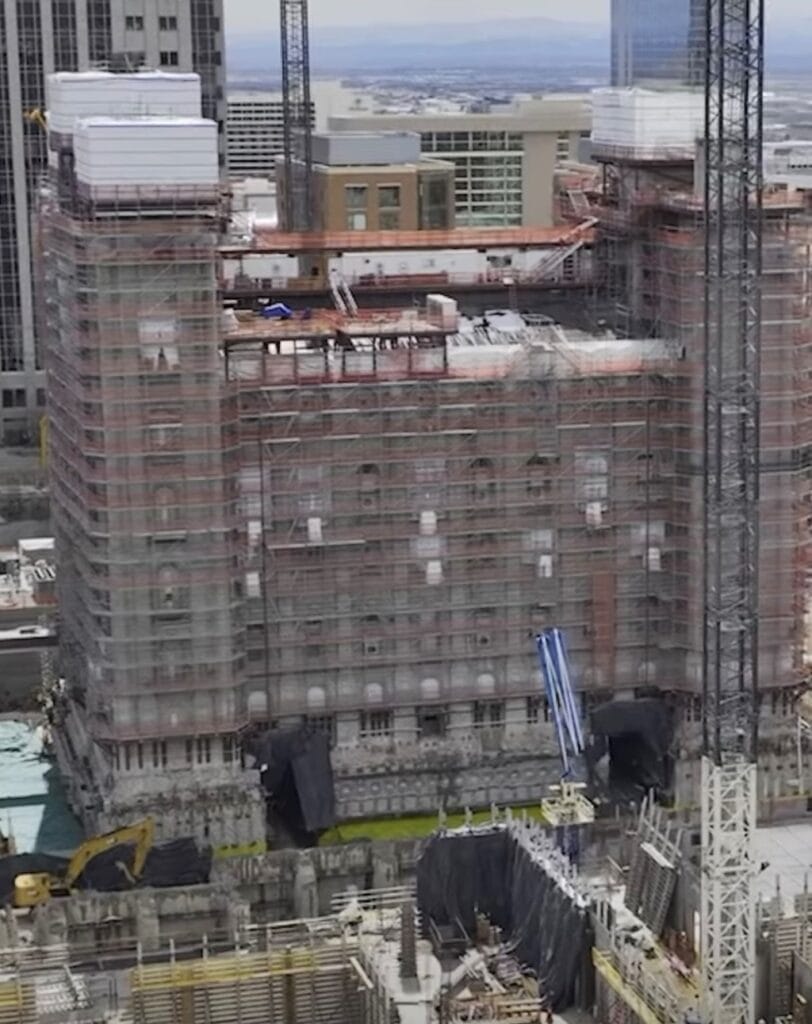Share
SALT LAKE CITY — Amid his team’s multi-year, tireless effort to protect an iconic place of worship from the unpredictable movements of the very earth beneath it, Jacobsen Construction’s Brandan Rowley hasn’t had much time to let up.
But he did at least allow himself a moment to exhale when the first base isolator was lowered neatly into its place at the foot of the Salt Lake Temple on May 3.
“I haven’t smiled this much in a long time,” said Rowley, the superintendent overseeing the seismic work package on the project. “I’m very happy this went as well as it did.”

A large majority of Utah’s population lives in proximity to the Wasatch Fault, a fracture in the earth’s crust that runs through large metro areas in Weber, Davis, Salt Lake and Utah counties. This fact has driven exhaustive preparation efforts in the state over the past half-century, including upgraded seismic standards for all newly constructed buildings starting in the 1970s and the participation of nearly a million people in the annual Great Utah Shakeout practice drill since it was first launched in 2012.
And now, on the Salt Lake Temple Renovation Project, the most advanced earthquake protection technologies ever invented are being installed in the foundation of the state’s most well-known building and a cherished symbol of religious devotion for members of The Church of Jesus Christ of Latter-day Saints from around the world. Project plans will require the installation of 98 total base isolators over the coming months. The seismic strengthening of the temple structure has been a central goal of the major renovation of the Salt Lake Temple that began in 2020.
“Everywhere you look on this project, you find something that hasn’t been done before,” said René Vignos, principal and chief operating officer at Forell | Elsesser, the renovation’s San Francisco-based structural engineering firm. “To successfully do work this complex, we’ve been breaking each task down into small pieces and attacking one challenge at a time, doing years of planning to get where we are now.”
As reported recently by the Church Newsroom, the project reached a long-anticipated seismic upgrade milestone on May 3 with the installation of the first base isolator, a critical step that used world-leading seismic technology and which had been planned for since even before work began at the jobsite.
“It’s a big milestone, and in many ways the beginning of the main work we’re here to do. While it’s just the first of 98, these base isolators are actually what the temple’s weight will eventually sit on,” Rowley said.

Base isolators are sophisticated mechanical devices that support a steel plate platform capable of moving five feet in any horizontal direction during an earthquake, which gives the building enough flexibility to withstand severe seismic activity without breaking away from its foundation. The steel plate moves with the building and keeps the weight of the building supported, while also staying securely attached to the base of the device.
When the seismic activity stops, the weight-bearing steel plate comes to a natural rest back in its original position sitting atop the bottom-center of the dish-shaped foundation of the isolator.
“That way, the building can do whatever it has to do during the seismic event and settle back in exactly where it’s supposed to be,” Rowley said.
Each base isolator consists of top and bottom steel plates and a shock-absorbent middle portion. Each one weights 18,000 pounds and can reliably support an enormous weight of 8 million pounds. (The temple structure itself weighs about 187 million pounds.)
In preparation for the base isolators’ installment to the foundation, a specially templated concrete footing, which is rebar-reinforced, is first built for each of them. The first base isolator, laid into a concrete footing at the west end of the temple, was lowered into place smoothly without any re-starts or positional re-adjustments needed.

“What comes to my mind is the countless hours of work, and of collaborating with Jacobsen, to get to this point,” Vignos said. “There was four years of planning that went into putting in that base isolator — and it fit just perfectly. That’s a testament to how carefully this has been planned for so many years, so that when a moment like this comes, it just works.”
Finishing the base isolator stage of the project will have big implications for other project tasks that couldn’t proceed without those foundational pieces in place, according to Rowley. This will include clearing out temporary structure supports and other jobsite equipment away from the base isolators to give them a six-foot wide horizontal berth for seismic movement, he said, noting that “they’ve got to have a clear path all the way around.”
“Everything up to now has been in preparation just to get to this step, but even from this point to the end of the project, it will be a constant fight to properly layer all of the work,” Rowley said. “We regularly have six to ten tasks that all need to be done at the same time, and we’ve got a lot still to do.”

Successfully adding all of the base isolators to the temple foundation will be the type of memorable project milestone that energizes the whole jobsite for the rest of the important work that lies ahead, Vignos said.
“We can say, ‘We figured out how to solve this challenge,’ and when we’re onto the next one, we can look back with confidence and say, ‘Well, we’ve come this far …’ And the team keeps building confidence,” he said. “This is a great moment. But it is just the beginning.”
To see the installation of the Salt Lake Temple’s first base isolator, watch this video produced by the Church Newsroom:
View this post on Instagram